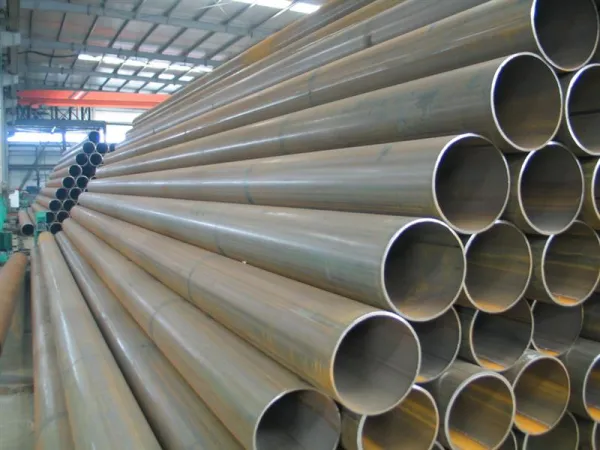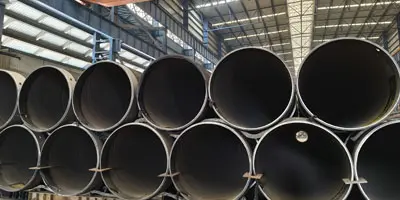In the production and manufacturing of pipes and pipe fittings, Schedule 40 is a specification of the American Standards Institute (ANSI) that refers to the wall thickness series of pipes, and its standards are ANSI/ASME B36.10M and ANSI/ASME B36.19M. Schedule 40 pipe is one of the common pipe specifications because of its moderate thickness and can be applied in many different fields such as construction, water supply, drainage systems, etc.
1.Characteristics of Schedule 40 ERW Pipe
(1)Wall Thickness
Schedule 40 ERW tubes have a specified wall thickness, providing the necessary strength and durability for various applications. The thickness is standardized according to the pipe size to ensure uniformity and reliability.
(2)Material
These pipes are commonly made from carbon steel, which offers high tensile strength, and ease of fabrication. Other materials such as stainless steel or alloy steel may also be used based on specific requirements.
(3)Size Range
Schedule 40 ERW pipes are available in a wide range of sizes to accommodate different application needs. Common sizes include 1/2 inch, 3/4 inch, 1 inch, 2 inch, and larger diameters, allowing for versatility in various piping systems.
(4)Manufacturing Standards
ERW pipes are manufactured in accordance with industry standards such as ASTM A53 for carbon steel pipes, ensuring quality and performance consistency.

2.Manufacturing Process of Schedule 40 ERW Pipe
The manufacturing of Schedule 40 ERW pipes involves the following key steps:
(1)Steel Coil
The process begins with a steel coil that is unwound and passed through a series of forming rolls to shape it into a cylindrical tube.
(2)Electric Resistance Welding
High-frequency electrical currents are applied to the edges of the formed steel strip, creating heat that fuses the edges together to form a continuous weld.
(3)Sizing and Straightening
The welded tube is then passed through sizing and straightening rolls to achieve the desired dimensions and straightness.
(4)Cutting and End Finishing
Finally, the tubes are cut to specific lengths and subjected to end finishing processes such as deburring and beveling to meet the required quality standards.
3.Uses of Schedule 40 ERW carbon steel pipe:
(1) Water supply and drainage
Schedule 40 ERW carbon steel pipe is widely used in residential and commercial water supply systems (delivering clean water) and drainage systems (collecting and treating wastewater) due to its corrosion resistance and long-term reliability.
(2) Pipeline system
Schedule 40 ERW carbon steel pipe is commonly used in piping systems for hot and cold water supply, providing a durable and leak-proof solution.
(3) Gas transmission
Schedule 40 ERW carbon steel pipe is suitable for natural gas transmission and distribution, providing the strength and integrity required for the safe transportation of natural gas and other gases. In addition, according to different laying methods, gas pipelines can be divided into underground laying, overhead laying and other types; according to different gas transmission pressures, gas pipelines can also be divided into low pressure, medium pressure, sub-high pressure and high pressure types. These classifications ensure that the pipeline system can adapt to different usage environments and requirements, ensuring safety and efficiency.
(4) Structural applications
In construction and infrastructure projects, these pipes are used for structural support, piling and foundation purposes, contributing to the overall stability and strength of buildings and other structures.
(5) Industrial Applications
ERW carbon steel pipes are used to transport different types of fluids and gases in a variety of industrial environments.






 English
English Español
Español بالعربية
بالعربية











 Phone :
Phone :  Whatsapp :
Whatsapp :  Email :
Email : 


